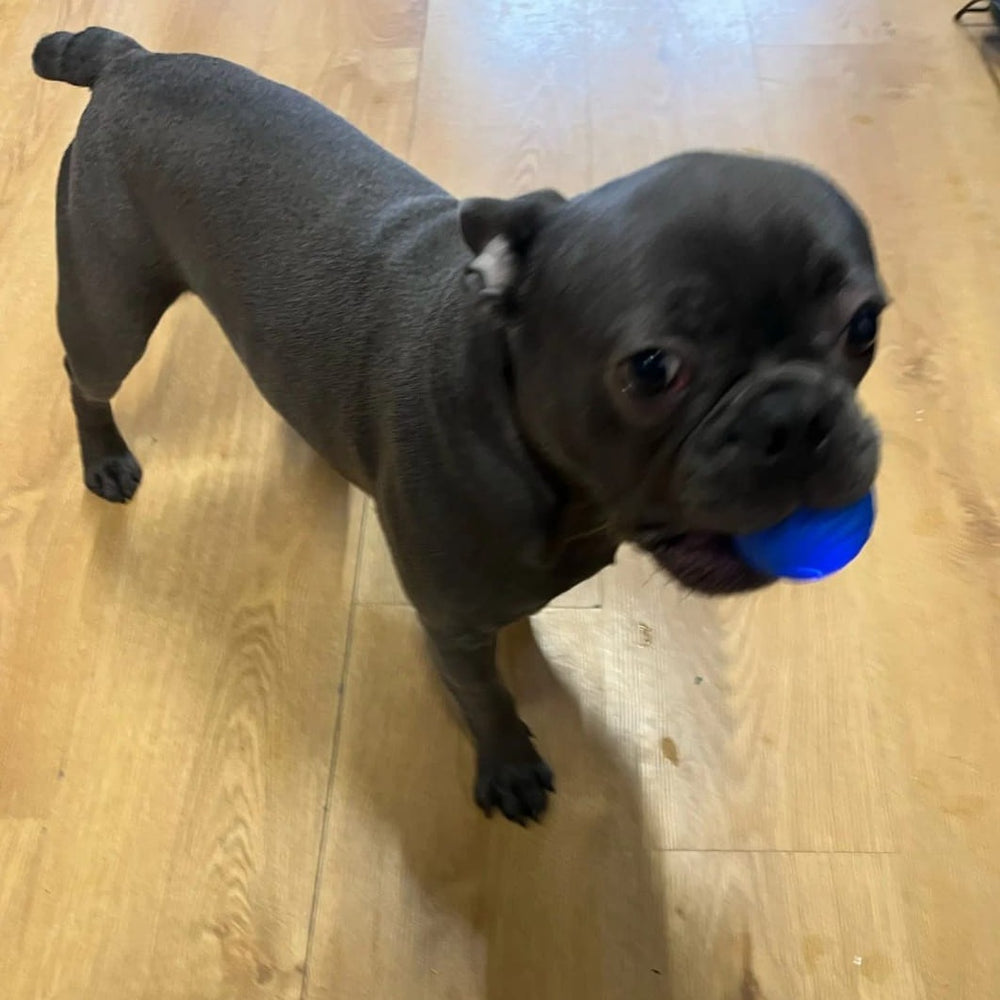Socializing your dog is an essential aspect of their development and overall well-being. Proper socialization helps your dog become well-adjusted, confident, and less likely to exhibit behavioral problems. Whether you have a new puppy or an older dog, this comprehensive guide will provide you with practical tips and techniques to effectively socialize your dog. For more in-depth information, you can also refer to the Hounds Lounge's comprehensive guide.
Why Socialization Matters
Socialization involves exposing your dog to a variety of people, animals, environments, and experiences in a positive manner. This process helps your dog learn how to interact appropriately with others and adapt to new situations. Proper socialization can lead to numerous benefits, including:
- Reduced Fear and Anxiety: Socialized dogs are less likely to be fearful or anxious in unfamiliar situations.
- Improved Behavior: Well-socialized dogs tend to exhibit fewer behavioral problems, such as aggression or excessive barking.
- Better Relationships: Socialized dogs can interact more positively with other dogs, people, and pets, leading to better relationships.
- Enhanced Quality of Life: Socialization enriches your dog's life by providing mental stimulation and reducing stress.
When to Start Socializing Your Dog
The ideal time to start socializing a dog is during puppyhood, between 3 and 14 weeks of age. During this critical period, puppies are more receptive to new experiences and can learn to adapt quickly. However, it's never too late to start socializing an older dog. With patience and consistency, older dogs can also learn to become more comfortable in various situations.
Tips for Socializing Your Dog
1. Start with Basic Training
Before diving into socialization, ensure your dog has basic training. Commands such as "sit," "stay," and "come" can help you manage your dog's behavior during socialization activities. Positive reinforcement techniques, such as treats and praise, are effective for teaching these commands.
2. Introduce Your Dog to Different People
Expose your dog to a variety of people, including men, women, children, and individuals wearing different types of clothing (e.g., hats, sunglasses). Encourage visitors to your home to offer treats and interact gently with your dog. If your dog is shy or fearful, allow them to approach people at their own pace.
3. Socialize with Other Dogs
Organize playdates with other well-behaved dogs. Begin with one-on-one interactions in a controlled environment, such as a fenced yard. Gradually introduce your dog to larger groups and dog parks. Always supervise interactions and watch for signs of stress or aggression. Positive experiences with other dogs will help your dog learn appropriate play and social behavior.
4. Expose Your Dog to Different Environments
Take your dog on regular outings to various places, such as parks, pet-friendly stores, and busy streets. Exposing your dog to different environments helps them become accustomed to new sights, sounds, and smells. Start with quieter, less crowded areas and gradually progress to busier locations.
5. Use Positive Reinforcement
Reward your dog with treats, praise, and affection for calm and positive behavior during socialization activities. Positive reinforcement helps your dog associate new experiences with positive outcomes. Avoid using punishment, as it can create fear and hinder the socialization process.
6. Gradual Desensitization
If your dog is fearful or reactive, use gradual desensitization to help them become more comfortable with specific triggers. For example, if your dog is afraid of loud noises, start by playing soft recordings of the noise at a distance while offering treats. Gradually increase the volume and proximity as your dog becomes more relaxed.
7. Enroll in a Training Class
Training classes, such as puppy kindergarten or basic obedience courses, provide structured socialization opportunities. These classes are led by professional trainers who can offer guidance and support. Your dog will have the chance to interact with other dogs and people in a controlled environment.
8. Use Enrichment Activities
Incorporate enrichment activities into your dog's routine to provide mental stimulation and reduce boredom. Puzzle toys, scent games, and agility training are excellent ways to keep your dog engaged and improve their social skills.
9. Monitor Body Language
Pay close attention to your dog's body language during socialization. Signs of stress or fear include tucked tail, flattened ears, panting, yawning, and avoiding eye contact. If your dog displays these behaviors, remove them from the situation and provide reassurance. Gradually reintroduce the stimulus at a lower intensity.
10. Be Patient and Consistent
Socialization is a gradual process that requires patience and consistency. Take small steps and celebrate progress, no matter how minor. Consistently expose your dog to new experiences and reinforce positive behavior. Over time, your dog will become more confident and well-adjusted.
Common Challenges and Solutions
Challenge: Fearful or Aggressive Behavior
Solution: If your dog displays fearful or aggressive behavior, consult a professional dog trainer or behaviorist. They can help develop a customized socialization plan and provide techniques to manage and modify behavior.
Challenge: Overstimulation
Solution: Overstimulation can lead to hyperactivity or stress. Limit the duration of socialization sessions and provide breaks for your dog to relax. Gradually increase the length and intensity of socialization activities.
Challenge: Lack of Progress
Solution: If you feel your dog is not making progress, reevaluate your socialization approach. Ensure you are using positive reinforcement and not pushing your dog too quickly. Consider seeking guidance from a professional trainer.
Socializing an Older Dog
While socializing a puppy is ideal, older dogs can also benefit from socialization. The key is to take a slower, more patient approach. Here are some tips for socializing an older dog:
- Start Slowly: Introduce new experiences gradually and at a pace your dog is comfortable with.
- Use Positive Reinforcement: Reward your dog for calm and positive behavior with treats and praise.
- Address Fear and Anxiety: Use desensitization and counter-conditioning techniques to help your dog overcome fear and anxiety.
- Seek Professional Help: If needed, consult a professional dog trainer or behaviorist for guidance.
Step-by-Step Guide to Socializing an Adult Dog
-
Go for Walks: Walks are not only great for exercise but also for socialization. Taking in the sights, smells, and sounds of the neighborhood helps your dog become accustomed to various stimuli. If you encounter a stressful situation, simply turn around and go home. Don't forget to bring treats to reward positive interactions with other dogs and humans.
-
Introduce Your Dog to Another Adult Dog: Meet up with a friend and their dog for a nice, relaxed walk. Allow plenty of space between the two dogs. If your dog remains calm and polite, reward them with a treat. When the walk is over and both dogs seem relaxed, allow them to sniff each other with their leashes still on. Reward positive interactions with treats. Gradually build up to off-leash interactions in a controlled, fenced area.
-
Introduce Your Dog to an Adult Human: Invite a friend over to your house and ask them to ignore your dog at first. If your dog remains calm, reward them with a treat. As the pair grows more comfortable, allow your friend to give your dog a treat. Gradually continue introducing new people to your dog, starting with individuals and working up to groups.
-
Introduce Your Dog to Puppies and Children: Follow the same steps as with adult dogs and humans, keeping in mind that puppies and children are less predictable. Take interactions slow and allow plenty of space. Ensure all parties are calm and in a good mood before allowing any touching or interacting. Supervise every move and use treats to reinforce positive behavior.
-
Visit Dog Parks: Once you are confident your dog can handle controlled environments, head to the dog park. On your first visit, keep your dog on their leash and show them what's going on at the park. If your dog acts comfortable, you can venture inside the fence on your next visit. Keep them on the leash until you're confident they feel relaxed.
-
Attend Doggy Daycare: After training to be a social butterfly, doggy daycare is where your pooch can show off their skills. At facilities like Hounds Lounge, dogs engage in cage-free group play in large indoor/outdoor play yards. This step allows your dog to unleash their natural pack animal instincts and interact with other dogs regularly.
Conclusion
Socializing your dog is an essential part of their development and well-being. By exposing your dog to a variety of people, animals, environments, and experiences, you can help them become a well-adjusted, confident, and happy companion. Remember to be patient, consistent, and use positive reinforcement throughout the process. With time and effort, your dog will learn to navigate the world with ease and enjoy the company of others.
For more detailed tips and expert advice on socializing your dog, check out the Hounds Lounge's comprehensive guide. Happy socializing!















Leave a comment